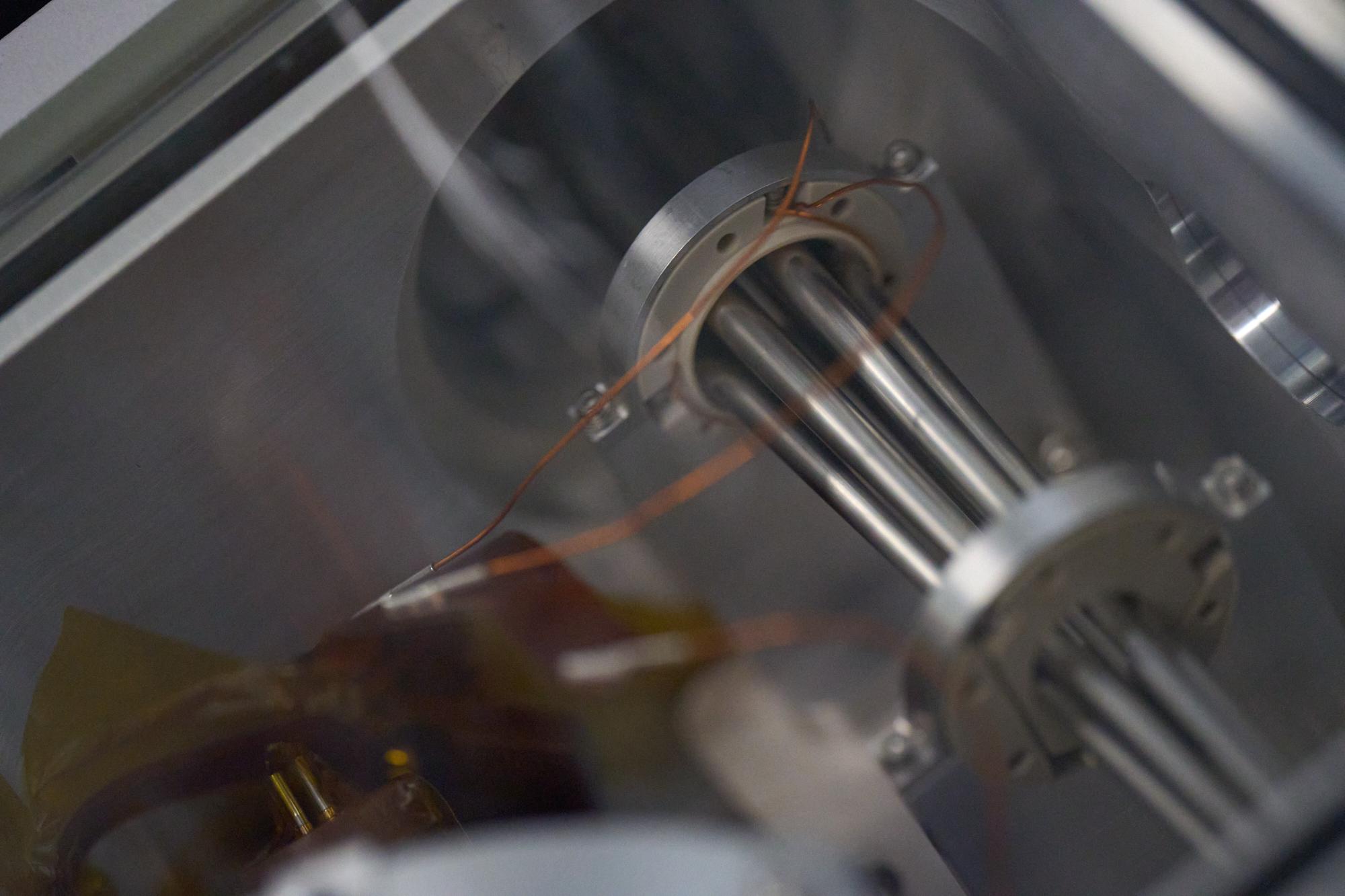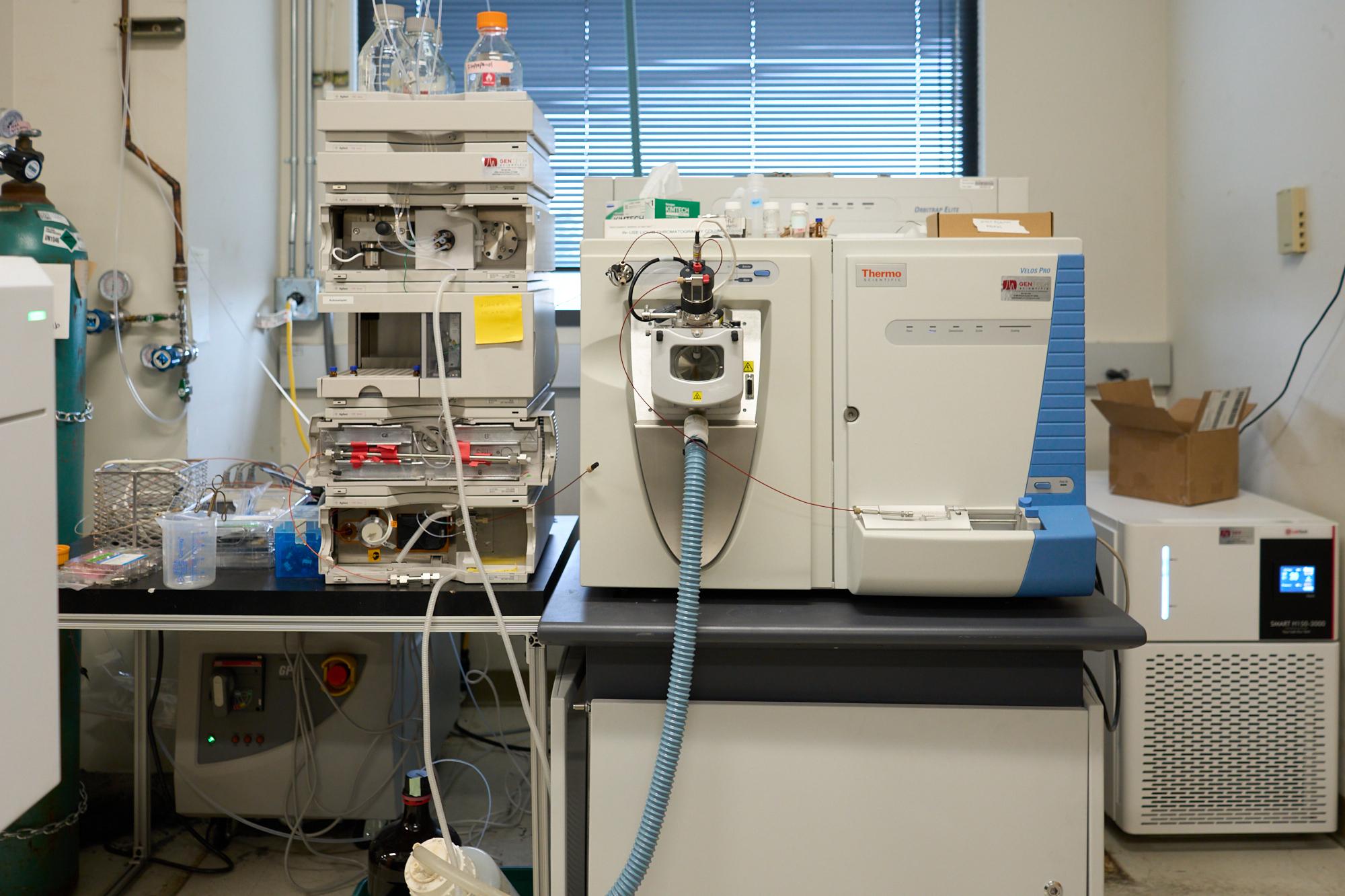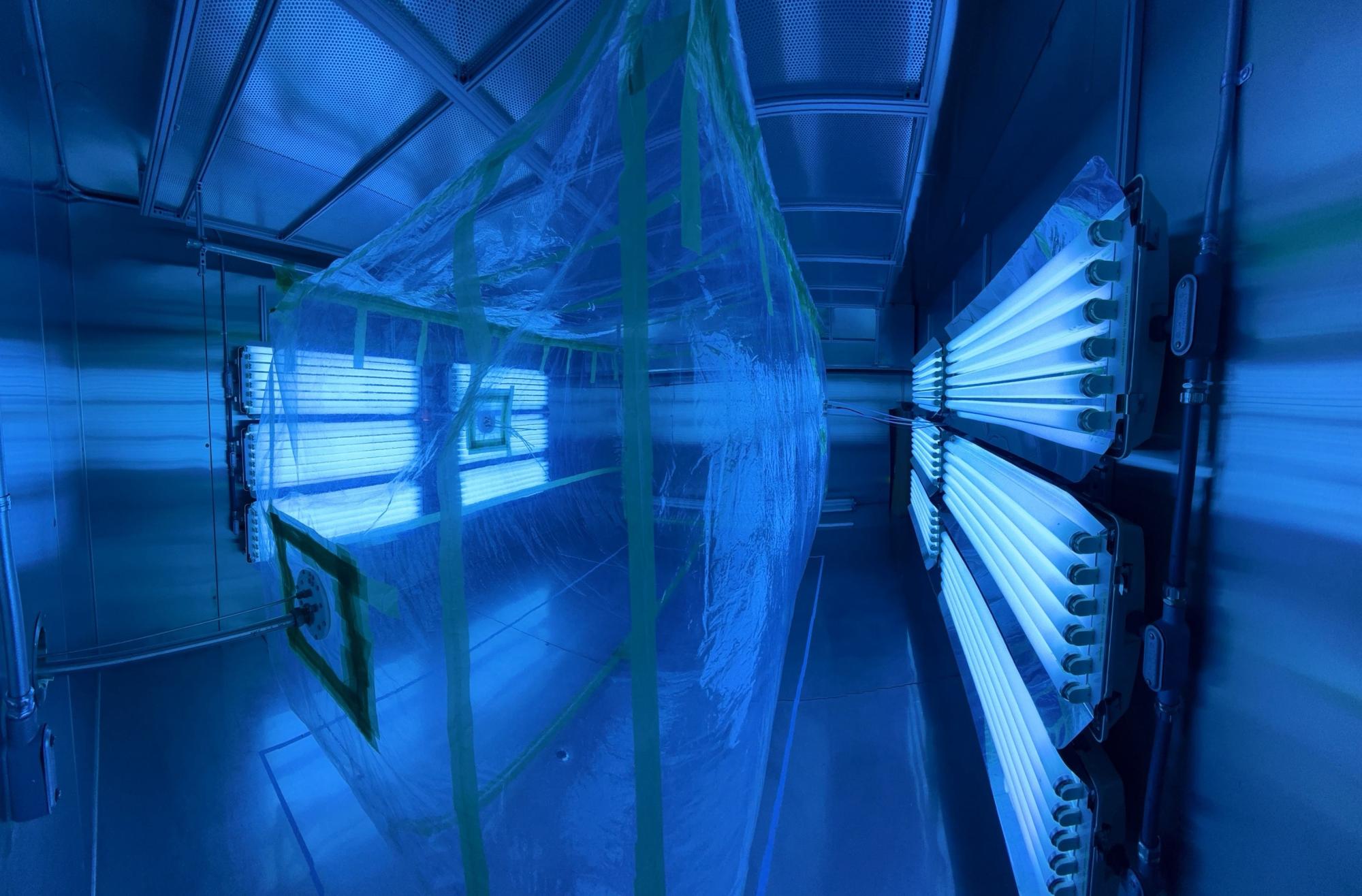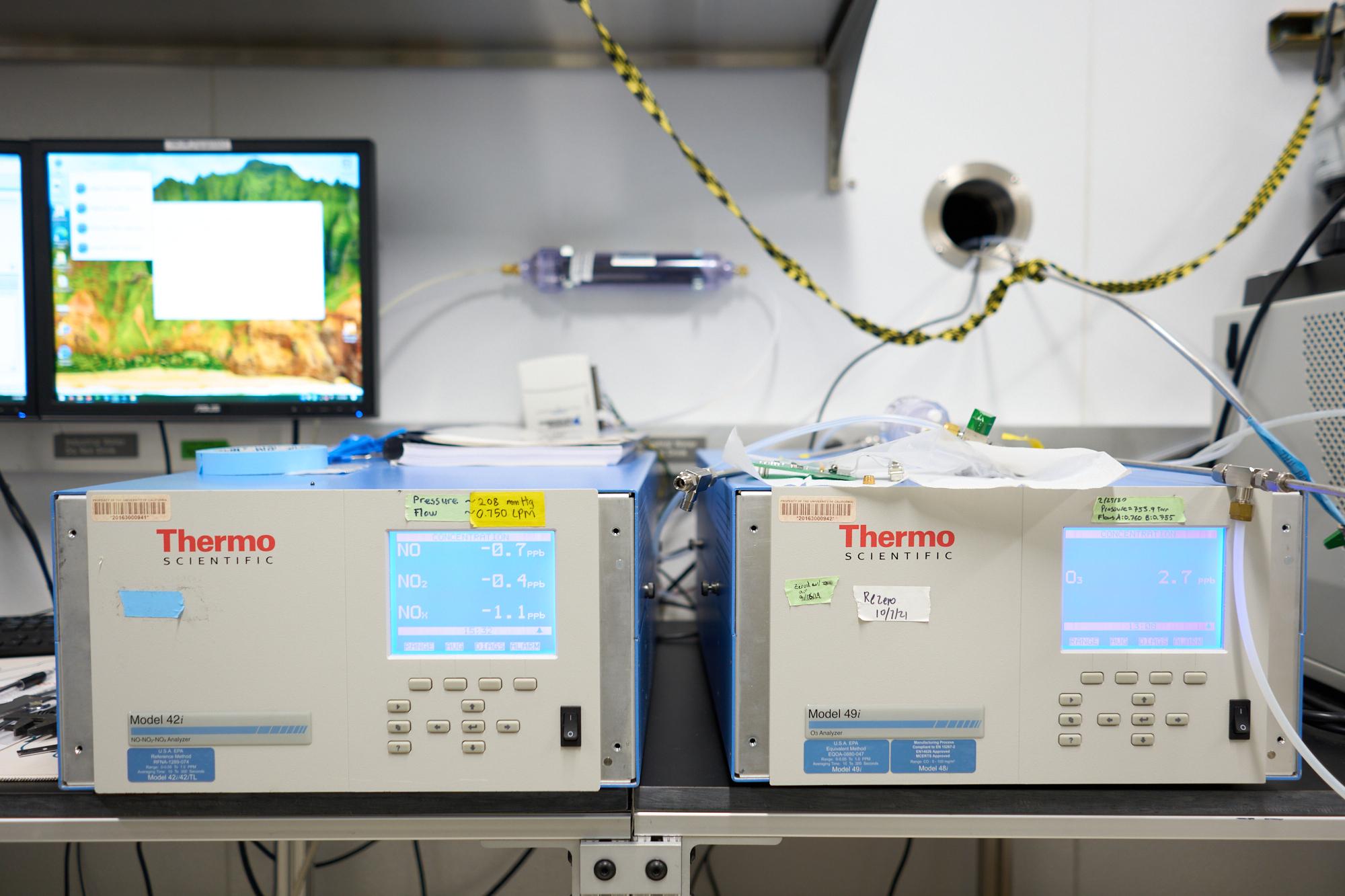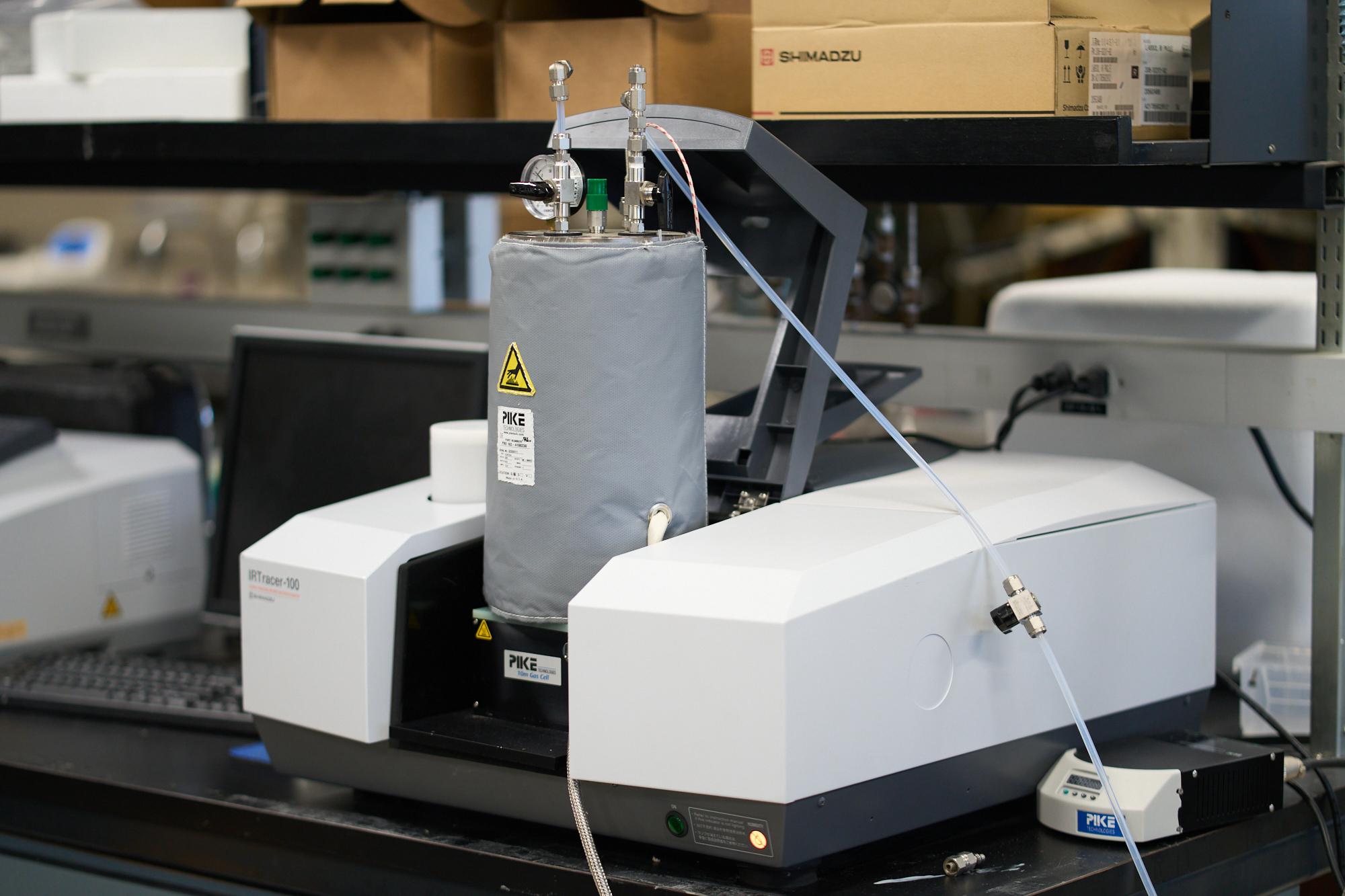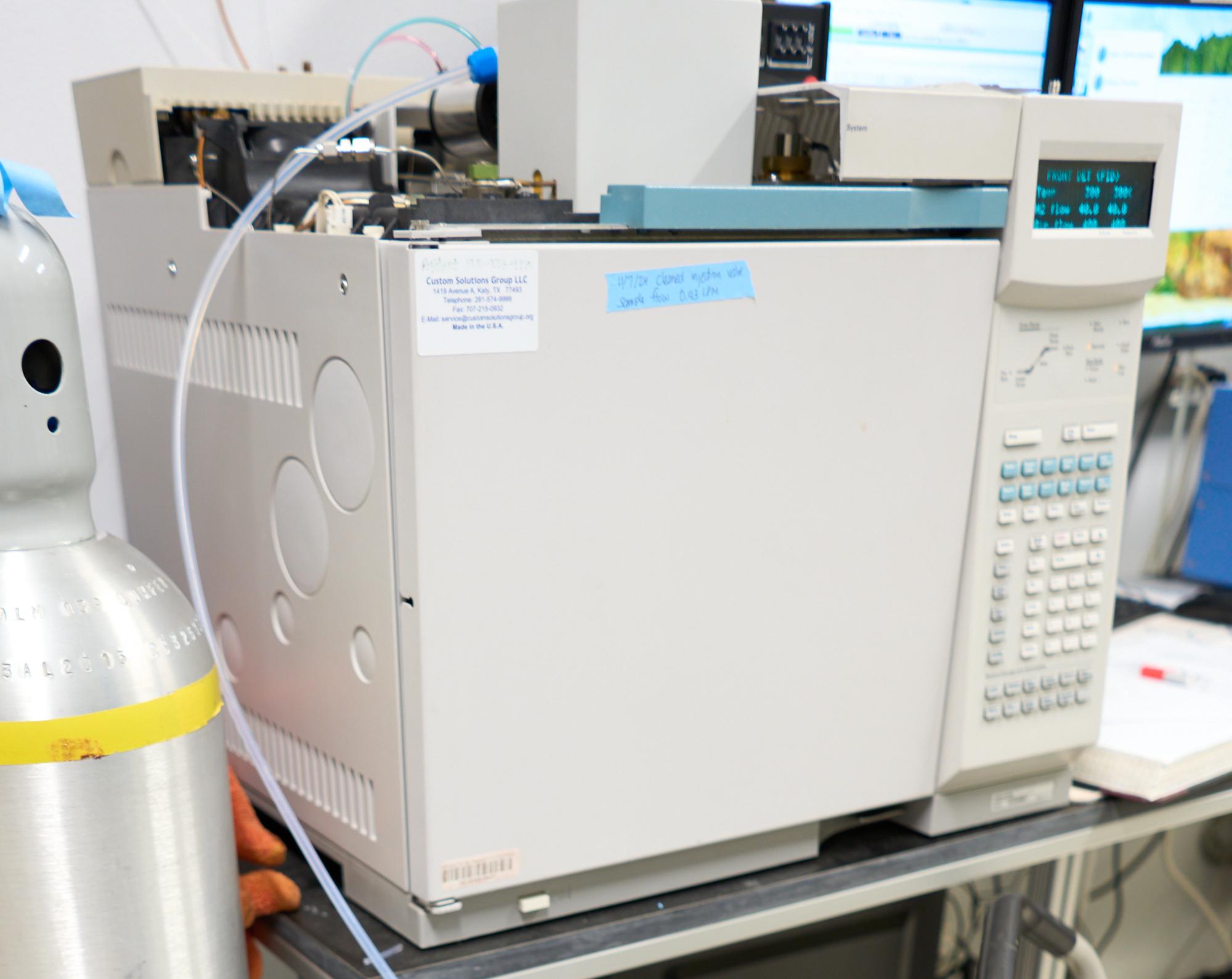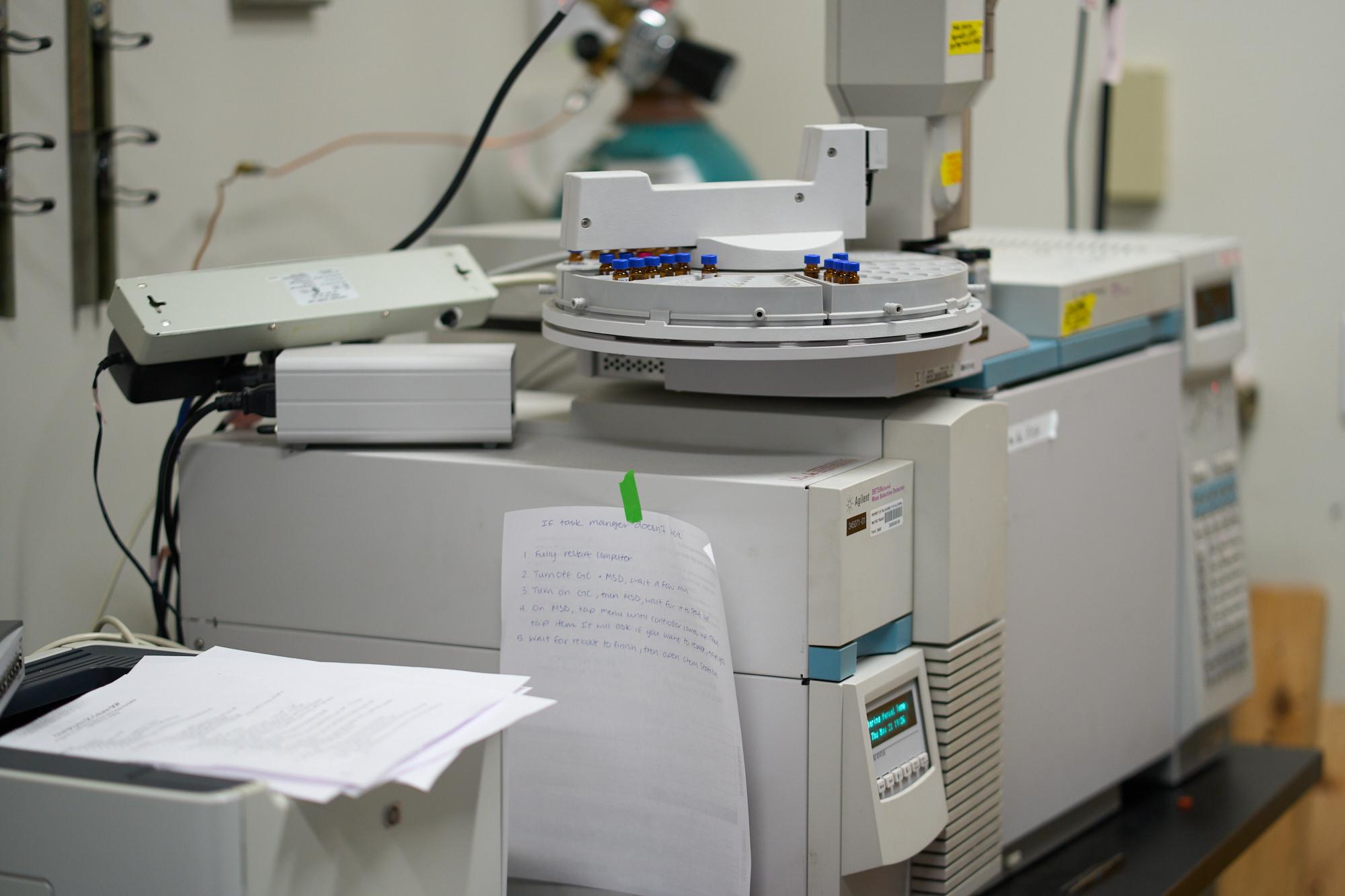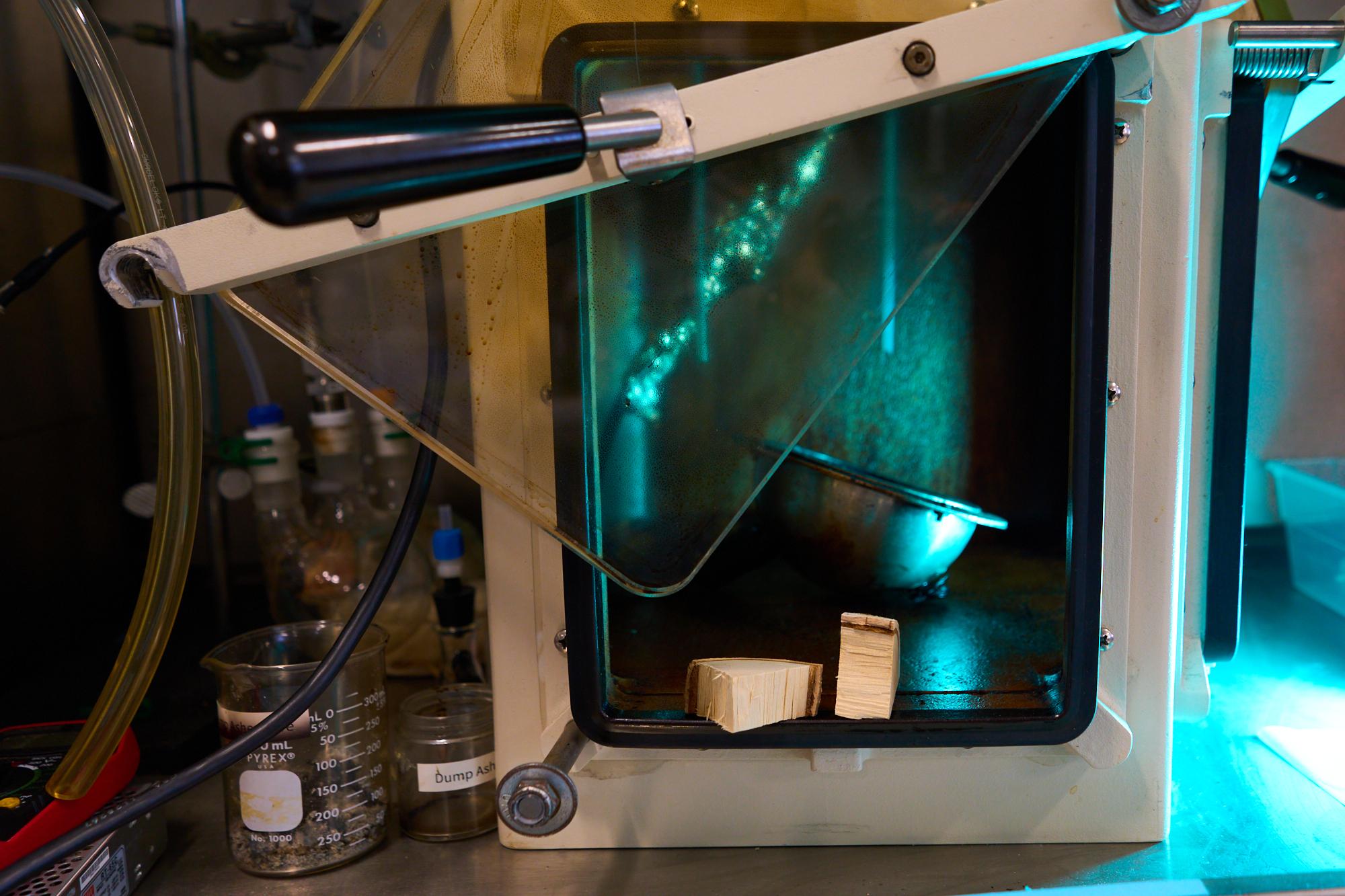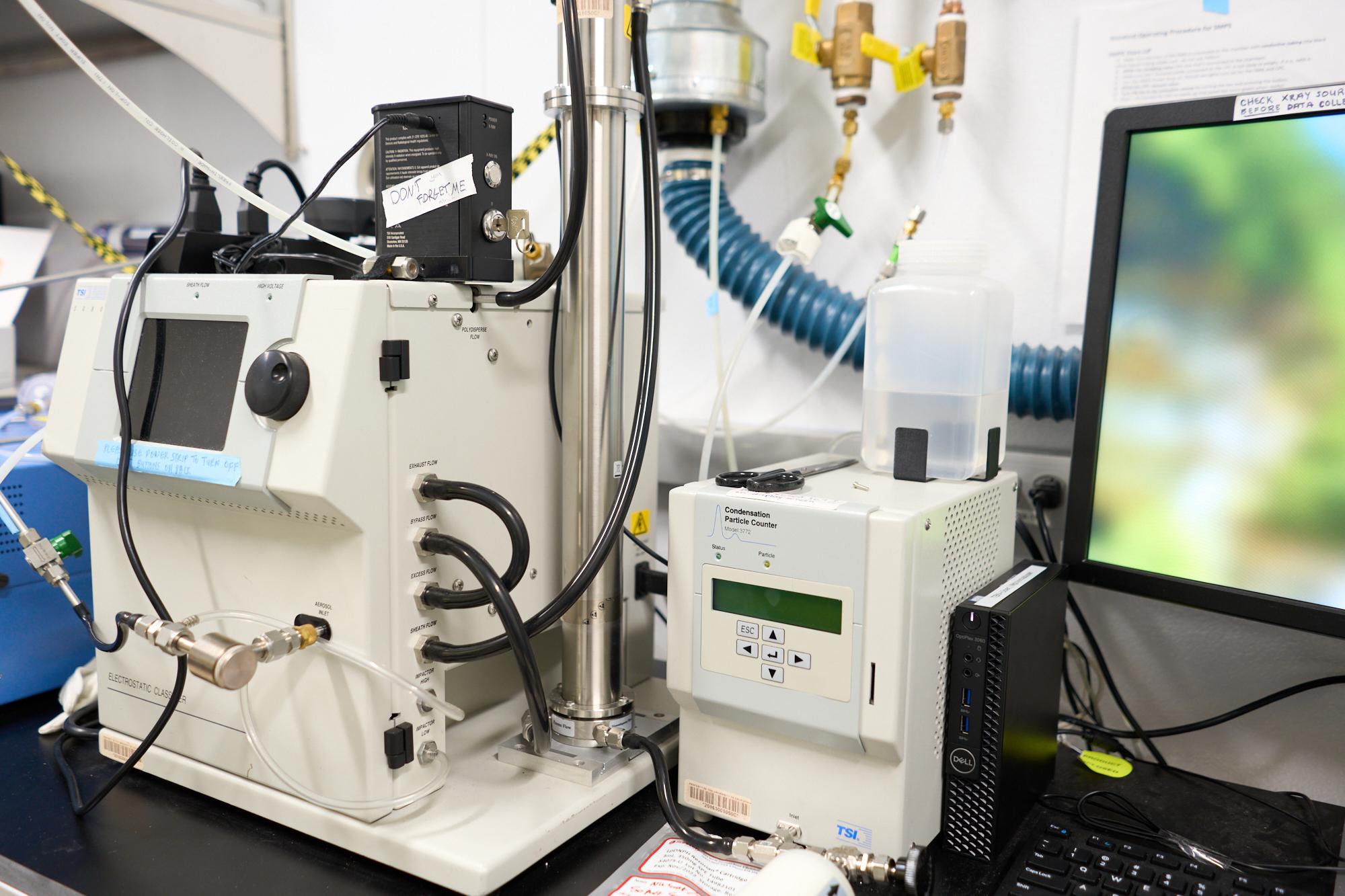Polar trace gas analysis with Chemical Ionization Mass Spectrometry (CIMS)
The CF3O- CIMS with triple quadrupole analyzer can detect part-per-trillion (ppt) levels of gases directly in air. The CF3O- CIMS is selective for hydroperoxides (ROOH), organic and inorganic acids (RCOOH, HNO3, HCN, SO2), phenols (Ar-OH), hydroxynitrates, hydroxycarbonyls, hydroxyepoxides, and any volatile or semivolatile compound that is polar or acidic.
Non-target analysis with High Resolution Mass Spectrometry (HRMS)
The accurate mass capabilities of our high resolution Orbitrap HRMS is coupled to complex mixture separation from liquid chromatography (LC), which nearly eliminates ambiguity and allows for sensitive non-target analysis of a diverse suite of analytes. We routinely quantify carbonyls, organic acids, organosulfates, cannabinoids, nicotine and other amines, drugs, pesticides, and more.
Gas and Aerosol Chemistry Studies with an Atmospheric Chamber
Our 10 cubic meter Teflon chamber is temperature controlled from -10 to 60 Celsius, humidity controlled (5 to 90% RH), and outfitted with UV-A radiation lamps (1 - 100% lights) for sophisticated atmospheric chemistry studies. Precise gas and aerosol injections control the atmospheric composition in the chamber. A suite of in-situ sensors give real-time information on the temperature, relative humidity, VOC concentrations, NOx concentration, ozone concentration, particle mass concentration, and polar reactive gases within the chamber during the course of the study. Studies of atmospheric feedback related to live plants, insects, or other biological models (e.g., to air pollution, wildfire smoke, etc.) are also possible.
Nitrogen Oxides (NOx) and Ozone Analyzers
Our NOx chemiluminescence analyzer detects down to 0.5 ppb of nitric oxide (NO) and nitrogen dioxide (NO2). Our ozone photometric analyzer detects down to 0.5 ppb of ozone. These instruments analyze the chemistry related to air quality in the atmospheric chamber.
Gas Cell Fourier-Transform Infrared (FTIR) Spectrometer
Our FTIR spectrometer with liquid nitrogen cooled detector is outfitted with a 10-m heated gas cell for improved gas analysis sensitivity. The FTIR is used to quantify ppm-levels of any volatile compound (e.g., formaldehyde, acetaldehyde, acrolein, diacetyl, methane, CO2, acetone, SO2, ozone, benzene, isoprene, myrcene, and hundreds more) in air or inert atmospheres.
Volatile Organic Compound (VOC) Analysis with Gas Chromatography Flame Ionization Detector (GC-FID)
Our GC-FID with gas loop injection allows for quantification of C2 to C15 VOCs in the air down to part per billion (ppb) sensitivity without sample preparation. We routinely analyze alkanes, alkenes (including isoprene, terpenes, sequiterpenes), and oxygenated VOCs from the atmospheric chamber or other gas mixtures.
Complex Mixture Analysis with Gas Chromatography Mass Spectrometry (GC-MS)
Our GC-MS can separate and quantitate a broad range of analytes in complex mixtures. We routinely analyze flavorants, coolants, cannabinoids, nicotine (including stereospecific analysis), vitamin e acetate, PAHs, pesticides, hydrocarbons, phenols and other wildfire compounds, dyes, drug molecules, polar compounds (e.g., polyols, organic acids, etc.), and much more.
Pyrolysis and Combustion Chamber
Our smoldering combustion chamber controls relative humidity, air oxygen content, and combustion temperature to pyrolyze or combust a variety of fuels to study the aerosols that are emitted. Sampling lines allow collection for chemical analysis. It has been mainly used to study woodsmoke.
Aerosol Characterization with Scanning Mobility Particle Sizer (SMPS)
Our SMPS gives real-time data on particle size distribution and mass concentrations. It is used to monitor how many aerosol particles we have in our atmospheric chamber or other gas mixtures, and how the concentrations and sizes change with time. The SMPS is mainly used to study particle nucleation, coagulation, formation, photochemical aging, and wall loss.


